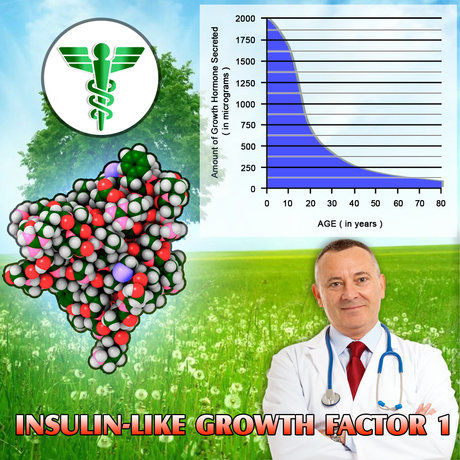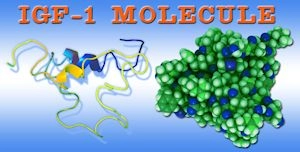Introduction
Hamstring injuries are a prevalent concern among athletes, particularly sprinters, due to the high demand placed on these muscles during explosive movements. This article delves into the findings of a two-year prospective study focused on the management of hamstring injuries among American male sprinters. By understanding the patterns, risk factors, and effective interventions, sports medicine professionals can better tailor prevention and rehabilitation strategies to enhance athlete performance and reduce injury recurrence.
Study Overview and Methodology
The study followed a cohort of 150 American male sprinters over two years, tracking the incidence and management of hamstring injuries. Participants ranged in age from 18 to 35 and competed at various levels, from collegiate to professional. Data collection included initial assessments, regular follow-ups, and detailed records of any injuries, treatments, and rehabilitation processes. The primary aim was to identify common injury patterns and evaluate the effectiveness of different management strategies.
Prevalence and Risk Factors
Hamstring injuries were found to be the most common type of injury among the sprinters, with an incidence rate of 25% over the study period. Key risk factors identified included previous hamstring injuries, inadequate warm-up routines, and insufficient strength and conditioning programs. Notably, sprinters with a history of hamstring injuries were three times more likely to experience a recurrence compared to those with no prior injuries.
Injury Patterns and Severity
The study categorized hamstring injuries into three levels of severity: mild, moderate, and severe. Mild injuries, characterized by minor strains and quick recovery, accounted for 60% of cases. Moderate injuries, which required more extensive rehabilitation, made up 30% of the incidents, while severe injuries, often involving significant muscle tears, comprised the remaining 10%. The timing of injuries was also significant, with a higher incidence noted during the competitive season, particularly in the early stages of the season when athletes were still ramping up their training intensity.
Management Strategies
Effective management of hamstring injuries involved a multi-faceted approach. Immediate post-injury care included rest, ice, compression, and elevation (RICE) to minimize inflammation and promote healing. For mild and moderate injuries, a structured rehabilitation program was implemented, focusing on progressive strengthening and flexibility exercises. Physical therapy played a crucial role, with techniques such as manual therapy, ultrasound, and electrical stimulation aiding recovery.
For severe injuries, surgical intervention was occasionally necessary, followed by a more intensive rehabilitation regimen. The study emphasized the importance of a gradual return to sport, with athletes participating in controlled, sport-specific drills before full competition. This approach significantly reduced the risk of reinjury and improved overall recovery outcomes.
Prevention and Education
Preventive measures were a key focus of the study. Comprehensive warm-up routines, incorporating dynamic stretching and activation exercises, were shown to reduce the incidence of hamstring injuries. Additionally, regular strength and conditioning programs, tailored to the specific demands of sprinting, were vital in building resilience in the hamstring muscles.
Education played a pivotal role in injury prevention. Athletes were educated on the importance of proper training techniques, the risks associated with overtraining, and the benefits of listening to their bodies. Coaches and sports medicine professionals collaborated to ensure that athletes adhered to these preventive measures, fostering a culture of injury awareness and proactive health management.
Conclusion
The two-year prospective study on hamstring injuries in American male sprinters provided valuable insights into the prevalence, risk factors, and effective management strategies for these common injuries. By implementing structured rehabilitation programs, emphasizing preventive measures, and fostering a culture of education and awareness, sports medicine professionals can significantly enhance the health and performance of sprinters. As the field of sports medicine continues to evolve, ongoing research and collaboration will be essential in further reducing the incidence and impact of hamstring injuries among athletes.
Contact Us For A Fast And Professional Response

- Preventing Ankle Injuries in Volleyball: Sports Medicine and Technology Solutions [Last Updated On: March 3rd, 2025] [Originally Added On: March 3rd, 2025]
- Hamstring Injuries in Sprinters: Treatment, Rehabilitation, and Prevention Strategies [Last Updated On: March 17th, 2025] [Originally Added On: March 17th, 2025]
- Snowboarding Wrist Injuries: Prevention, Treatment, and Rehabilitation Strategies for American Males [Last Updated On: March 18th, 2025] [Originally Added On: March 18th, 2025]
- Optimizing Recovery for American Male Martial Artists: A Holistic Sports Medicine Approach [Last Updated On: March 19th, 2025] [Originally Added On: March 19th, 2025]
- Sports Medicine: Enhancing Performance and Longevity in American Male Water Polo Players [Last Updated On: March 19th, 2025] [Originally Added On: March 19th, 2025]
- Sports Medicine's Crucial Role in Preventing Overuse Injuries in American Male Climbers [Last Updated On: March 19th, 2025] [Originally Added On: March 19th, 2025]
- Sports Medicine's Vital Role in Enhancing Triathlete Performance and Health [Last Updated On: March 20th, 2025] [Originally Added On: March 20th, 2025]
- Surfing Injuries in American Males: Prevalence, Prevention, and Sports Medicine Advances [Last Updated On: March 20th, 2025] [Originally Added On: March 20th, 2025]
- Sports Medicine Revolutionizes CrossFit: Enhancing Safety and Performance for American Males [Last Updated On: March 21st, 2025] [Originally Added On: March 21st, 2025]
- Preventing Shoulder Injuries in Lacrosse Goalies: A Comprehensive Sports Medicine Approach [Last Updated On: March 21st, 2025] [Originally Added On: March 21st, 2025]
- Sports Medicine Innovations Aid American Male Rowers with Lower Back Pain Management [Last Updated On: March 21st, 2025] [Originally Added On: March 21st, 2025]
- Sports Medicine: Enhancing Health and Performance in American Male Figure Skating [Last Updated On: March 21st, 2025] [Originally Added On: March 21st, 2025]
- Sports Medicine: Enhancing Performance and Longevity for American Male Table Tennis Players [Last Updated On: March 21st, 2025] [Originally Added On: March 21st, 2025]
- Beach Volleyball Ankle Injuries: Prevention, Training, and Rehabilitation Strategies [Last Updated On: March 22nd, 2025] [Originally Added On: March 22nd, 2025]
- Sports Medicine Enhances Performance and Longevity in American Male Polo Players [Last Updated On: March 22nd, 2025] [Originally Added On: March 22nd, 2025]
- BMX Challenges and Recovery: The Vital Role of Sports Medicine for American Males [Last Updated On: March 23rd, 2025] [Originally Added On: March 23rd, 2025]
- Sports Medicine's Impact on Injury Management in American Male Field Hockey Players [Last Updated On: March 23rd, 2025] [Originally Added On: March 23rd, 2025]
- Ankle Health Strategies for American Male Basketball Point Guards: Prevention to Rehabilitation [Last Updated On: March 23rd, 2025] [Originally Added On: March 23rd, 2025]
- Sports Medicine's Vital Role in Enhancing Soccer Defenders' Recovery and Performance [Last Updated On: March 23rd, 2025] [Originally Added On: March 23rd, 2025]
- Sports Medicine Revolutionizes Recovery for American Male Ice Hockey Players [Last Updated On: March 23rd, 2025] [Originally Added On: March 23rd, 2025]
- Ultimate Frisbee: Knee Health Strategies for American Male Athletes [Last Updated On: March 24th, 2025] [Originally Added On: March 24th, 2025]
- Sports Medicine's Role in Enhancing American Male Fencers' Performance and Longevity [Last Updated On: March 24th, 2025] [Originally Added On: March 24th, 2025]
- Sports Medicine Advances Aid Hip Recovery in American Male Track Cyclists [Last Updated On: March 24th, 2025] [Originally Added On: March 24th, 2025]
- Hamstring Injury Prevention Strategies for American Male Soccer Midfielders [Last Updated On: March 24th, 2025] [Originally Added On: March 24th, 2025]
- Rotator Cuff Injuries in American Male Swimmers: Diagnosis, Treatment, and Prevention [Last Updated On: March 24th, 2025] [Originally Added On: March 24th, 2025]
- Optimizing Recovery for American Football Wide Receivers: A Sports Medicine Approach [Last Updated On: March 24th, 2025] [Originally Added On: March 24th, 2025]
- Sports Medicine's Role in Enhancing American Male Swimmers' Health and Performance [Last Updated On: March 24th, 2025] [Originally Added On: March 24th, 2025]
- Sports Medicine Enhances Career Longevity for American Male Badminton Players [Last Updated On: March 24th, 2025] [Originally Added On: March 24th, 2025]
- Sports Medicine Revolutionizes Training for American Male Cyclists [Last Updated On: March 25th, 2025] [Originally Added On: March 25th, 2025]
- Sports Medicine Enhances Safety and Performance in American Male Trampoline Gymnastics [Last Updated On: March 25th, 2025] [Originally Added On: March 25th, 2025]
- Sports Medicine's Role in Preventing Shin Splints in American Male Runners [Last Updated On: March 25th, 2025] [Originally Added On: March 25th, 2025]
- Managing Groin Injuries in American Male Hockey Players: Strategies and Prevention [Last Updated On: March 25th, 2025] [Originally Added On: March 25th, 2025]
- Sports Medicine Revolutionizes Career Longevity for American Male Baseball Pitchers [Last Updated On: March 26th, 2025] [Originally Added On: March 26th, 2025]
- Sports Medicine Revolutionizes Training and Health for American Male Handball Athletes [Last Updated On: March 26th, 2025] [Originally Added On: March 26th, 2025]
- Sports Medicine Advances Aid Lacrosse Attackmen with Shoulder Injury Prevention and Treatment [Last Updated On: March 26th, 2025] [Originally Added On: March 26th, 2025]
- Cross-Country Skiing: Knee Health Strategies for American Male Skiers [Last Updated On: March 26th, 2025] [Originally Added On: March 26th, 2025]
- Sports Medicine's Role in Preventing Stress Fractures in American Male Runners [Last Updated On: March 26th, 2025] [Originally Added On: March 26th, 2025]
- Optimizing Recovery for American Male Soccer Goalkeepers: A Holistic Approach [Last Updated On: March 26th, 2025] [Originally Added On: March 26th, 2025]
- Preventing Achilles Tendon Injuries in American Male Runners: Sports Medicine Strategies [Last Updated On: March 26th, 2025] [Originally Added On: March 26th, 2025]
- Tendonitis in American Male Tennis Players: Sports Medicine Treatment and Prevention Strategies [Last Updated On: March 26th, 2025] [Originally Added On: March 26th, 2025]
- Lacrosse Midfielders' Hip Health: Sports Medicine Innovations and Rehabilitation Strategies [Last Updated On: March 26th, 2025] [Originally Added On: March 26th, 2025]
- Preventing Back Injuries in American Male Rowers: A Holistic Sports Medicine Approach [Last Updated On: March 27th, 2025] [Originally Added On: March 27th, 2025]
- Speed Skating Muscle Health: Strategies and Innovations for American Male Athletes [Last Updated On: March 27th, 2025] [Originally Added On: March 27th, 2025]
- Sports Medicine Revolutionizes Performance in American Male Volleyball [Last Updated On: March 27th, 2025] [Originally Added On: March 27th, 2025]
- Rugby Sevens' Rise in U.S. and Vital Role of Sports Medicine for Male Athletes [Last Updated On: March 27th, 2025] [Originally Added On: March 27th, 2025]
- Sports Medicine: Enhancing Performance and Health in American Male Track and Field Athletes [Last Updated On: March 28th, 2025] [Originally Added On: March 28th, 2025]
- Sports Medicine: Essential for American Male Rugby Forwards' Health and Performance [Last Updated On: March 28th, 2025] [Originally Added On: March 28th, 2025]
- Sports Medicine Boosts Career Longevity for American Male Baseball Outfielders [Last Updated On: March 29th, 2025] [Originally Added On: March 29th, 2025]
- Sports Medicine's Role in Managing Injuries for American Male Swimmers [Last Updated On: March 29th, 2025] [Originally Added On: March 29th, 2025]
- Knee Health Management for Football Running Backs: Prevention, Treatment, and Rehabilitation [Last Updated On: March 29th, 2025] [Originally Added On: March 29th, 2025]
- Optimizing Recovery for American Male Soccer Forwards: A Comprehensive Approach [Last Updated On: March 29th, 2025] [Originally Added On: March 29th, 2025]
- Sports Medicine: Enhancing Performance and Health in Basketball Forwards [Last Updated On: March 30th, 2025] [Originally Added On: March 30th, 2025]
- Sports Medicine's Role in Enhancing American Male Volleyball Players' Performance and Health [Last Updated On: April 1st, 2025] [Originally Added On: April 1st, 2025]
- Sports Medicine Revolutionizes Performance and Health for American Male Cyclists [Last Updated On: April 1st, 2025] [Originally Added On: April 1st, 2025]
- Sports Medicine Revolutionizes Performance and Health in Male Track and Field Athletes [Last Updated On: April 4th, 2025] [Originally Added On: April 4th, 2025]
- Cross-Country Skiing and Knee Health: Insights for American Male Skiers [Last Updated On: April 5th, 2025] [Originally Added On: April 5th, 2025]
- Sports Medicine: Enhancing Health and Performance for Basketball Forwards [Last Updated On: April 6th, 2025] [Originally Added On: April 6th, 2025]
- Lacrosse Midfielders' Hip Injuries: Sports Medicine's Role in Treatment and Prevention [Last Updated On: April 6th, 2025] [Originally Added On: April 6th, 2025]
- Preventing Achilles Tendon Injuries in American Male Runners: A Sports Medicine Approach [Last Updated On: April 8th, 2025] [Originally Added On: April 8th, 2025]
- Managing Groin Injuries in American Male Hockey: Diagnosis, Treatment, and Prevention Strategies [Last Updated On: April 8th, 2025] [Originally Added On: April 8th, 2025]
- Preventing Hamstring Injuries in American Male Soccer Midfielders: A Comprehensive Guide [Last Updated On: April 9th, 2025] [Originally Added On: April 9th, 2025]
- Sports Medicine: Enhancing Health and Performance in American Male Rugby Forwards [Last Updated On: April 10th, 2025] [Originally Added On: April 10th, 2025]
- Sports Medicine: Extending Careers of American Male Baseball Outfielders [Last Updated On: April 10th, 2025] [Originally Added On: April 10th, 2025]
- Knee Health Strategies for American Football Running Backs: Prevention and Recovery [Last Updated On: April 11th, 2025] [Originally Added On: April 11th, 2025]
- Sports Medicine: Enhancing Performance and Health in American Male Track Athletes [Last Updated On: April 11th, 2025] [Originally Added On: April 11th, 2025]
- Optimizing Recovery for American Male Soccer Forwards: A Comprehensive Guide [Last Updated On: April 12th, 2025] [Originally Added On: April 12th, 2025]
- Sports Medicine Revolutionizes Performance and Health in American Male Cycling [Last Updated On: April 12th, 2025] [Originally Added On: April 12th, 2025]
- Sports Medicine's Role in Enhancing American Male Swimmers' Performance and Health [Last Updated On: April 13th, 2025] [Originally Added On: April 13th, 2025]
- Sports Medicine Revolutionizes Hip Injury Management in American Male Lacrosse Midfielders [Last Updated On: April 16th, 2025] [Originally Added On: April 16th, 2025]
- Sports Medicine's Vital Role for American Male Rugby Forwards' Health and Performance [Last Updated On: April 16th, 2025] [Originally Added On: April 16th, 2025]
- Sports Medicine's Vital Role in Enhancing Volleyball Performance and Career Longevity [Last Updated On: April 17th, 2025] [Originally Added On: April 17th, 2025]
- Managing Groin Injuries in Hockey: Diagnosis, Treatment, and Prevention Strategies [Last Updated On: April 18th, 2025] [Originally Added On: April 18th, 2025]
- Sports Medicine's Role in Preventing Achilles Tendon Injuries in American Male Runners [Last Updated On: April 18th, 2025] [Originally Added On: April 18th, 2025]
- Sports Medicine's Role in Protecting Football Running Backs' Knee Health [Last Updated On: April 19th, 2025] [Originally Added On: April 19th, 2025]
- Preventing Hamstring Injuries in Soccer: A Holistic Sports Medicine Approach [Last Updated On: April 19th, 2025] [Originally Added On: April 19th, 2025]
- Knee Health Strategies for American Male Cross-Country Skiers [Last Updated On: April 19th, 2025] [Originally Added On: April 19th, 2025]
- Optimizing Recovery for American Male Soccer Forwards: Sports Medicine Strategies [Last Updated On: April 19th, 2025] [Originally Added On: April 19th, 2025]
- Sports Medicine: Enhancing Performance and Career Longevity for Basketball Forwards [Last Updated On: April 20th, 2025] [Originally Added On: April 20th, 2025]
- Revolutionizing Soccer: Sports Medicine Advances for American Male Players [Last Updated On: April 21st, 2025] [Originally Added On: April 21st, 2025]
- Sports Medicine's Role in Enhancing Performance and Safety for American Male Swimmers [Last Updated On: April 22nd, 2025] [Originally Added On: April 22nd, 2025]
















